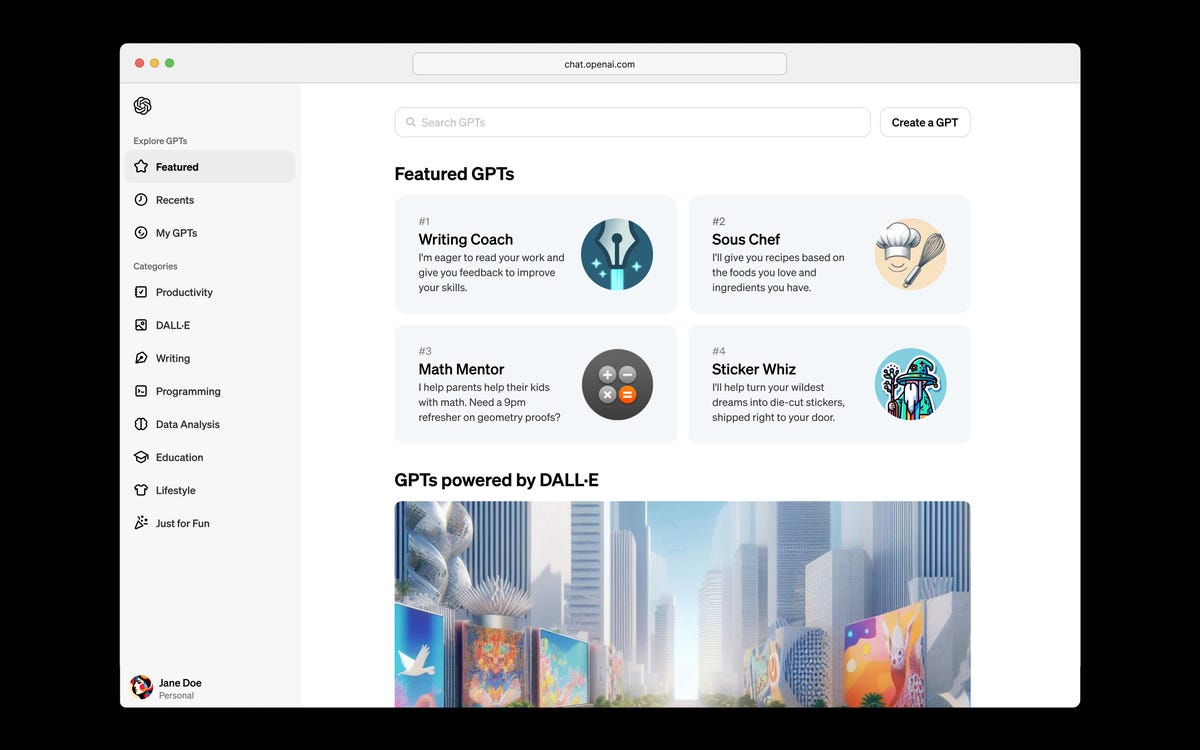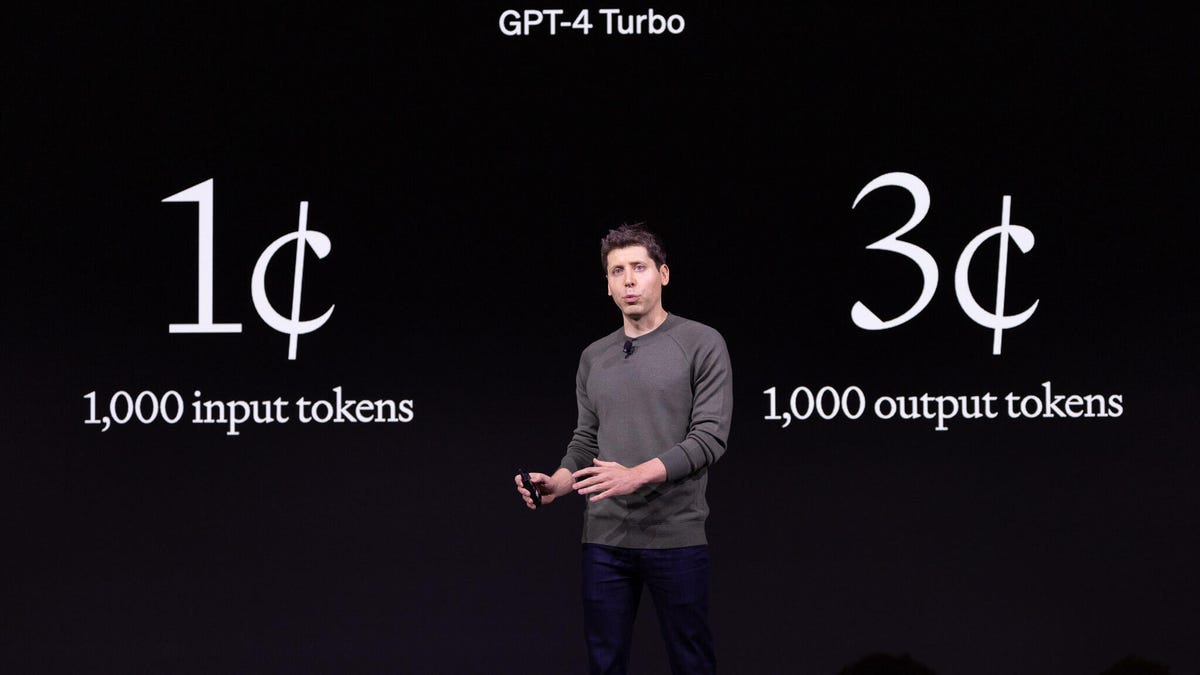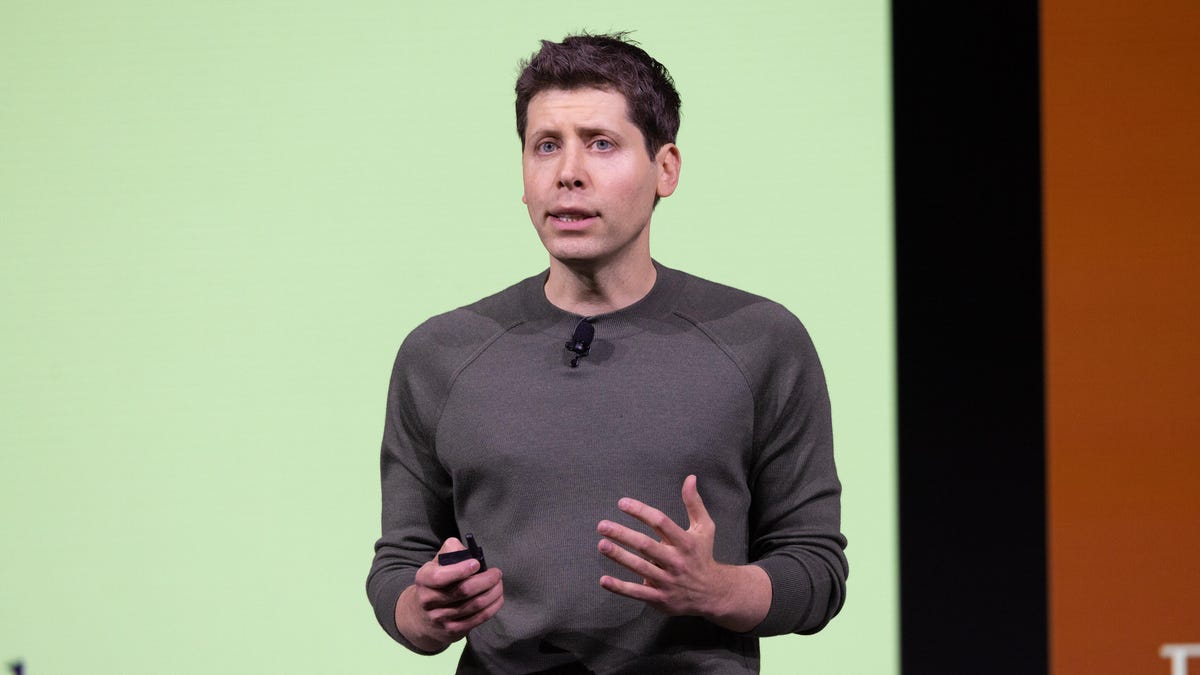OpenAI, the company whose ChatGPT brought AI chatbots to mainstream awareness, said Monday that it’ll let you build your own special-purpose version of its artificial intelligence technology. And with a new app store coming that’ll let you find or share these GPTs, as the company is calling the special-purpose bots, OpenAI looks like it’s hoping to have something an iPhone moment.
You don’t need to know how to program to make a new GPT. You have to give it plain-language instructions, upload some of your own knowledge in the form of PDFs, videos or other files, then steer the bot’s purpose in a direction like creating images or searching the web.
“GPTs are tailored versions of ChatGPT for a specific purpose,” OpenAI Chief Executive Sam Altman said at the OpenAI DevDay conference in San Francisco. He demonstrated the technology, telling the build system to create an advice-giving app for startups that draws from videos of his own talks that he uploaded. And he expects many more GPTs to arrive.
“Eventually, you’ll have your personalized GPTs that can call out to lots of other GPTs,” Altman said. “You’ll be able to accomplish very complex things by bringing different services together.”
The technology could help take AI to a new level. For one thing, the GPT app idea could help people get more use out of AI with focused tools. For another, being able to tune those tools to your own needs — for example with a particular data set or image style — could improve AI beyond the vast, generic abilities that come with ChatGPT today. Last, building an app store is a tried and true way for a big business to turn a broad computing foundation into a business that lots of people pay to use.
If you’re curious, you can try out the custom GPT technology on OpenAI’s website. The interface nudges you through the process, asking what you want the tool to do, requesting files to upload and volunteering a name.
And next month, OpenAI will publish many of these chatbots through a new GPT store interface. OpenAI didn’t reveal pricing details, but the company will share revenue with those who build the custom GPTs and eventually offer subscriptions to individual ones, Altman said.

OpenAI is at the cusp of the AI revolution, training an enormously complex large language model to recognize patterns on vast swaths of text like internet chat forums. The AI technology can accept prompts like “explain the concept of hell in Dante’s Inferno” and generate its own response. OpenAI also offers generative AI that can create images through its Dall-E technology. More than 100 million people use ChatGPT each week, Altman said.
AI systems aren’t trustworthy when it comes to facts, which is why AI proponents like OpenAI, Google, Microsoft, Meta and Anthropic often position chatbots as assistants or co-pilots that still require human supervision. But their abilities to do things like create illustrations or summarize legal documents are powerful enough to have spooked many that AI could replace human employees.
The GPT apps should appeal to businesses trying to automate tasks and give them conversational interface, said Gartner analyst Arun Chandrasekaran. But it’ll be real work to manage these chatbots as needs and usage changes, he said. In other words, next-gen tech tools still come with the maintenance hassles of their predecessors.
There is clearly demand for more business function and role specific conversational agents, which GPTs will cater to. However, managing the lifecycle of these custom chatbots as well as their performance across various business functions will be new challenges for enterprise clients.
OpenAI is revamping its core large language model to be more powerful. Next on the priority list will be making it faster, Altman said. That’ll be good news for anyone who’s stared at ChatGPT’s interface waiting for a response.
GPT-4 Turbo arrives at developer event
At OpenAI’s first developer event, hundreds of programmers gathered to hear the latest developments about building their own services on the company’s GPT technology.

Among the new abilities OpenAI will offer developers, and thus to all of us who use those developers’ tools, is a new large language model called GPT-4 Turbo. It’s capable of much larger, more complex prompts, and it’s also been optimized so it’ll cost less for developers to use.
When hearing of the more powerful prompt abilities, developers at the event cheered loudly. But it’s not just for developers: GPT-4 Turbo is now also the brains behind the ChatGPT service.
GPT-4 Turbo also is trained on more recent data, including information published up to April 2023. That’s a big improvement over the first version of GPT-3 and its ChatGPT chatbot interface, which were years out of date when they arrived a year ago.
And GPT-4 Turbo can accept images as input, which means OpenAI’s technology can be used to perform tasks like identifying objects in a photo or generating a caption. As for creating images, the new model can do so with the new Dall-E 3 technology.
Another big change for developers is the ability to create assistants — AI bots that can take actions on your behalf. OpenAI demonstrated one that went through the DevDay attendee list and granted each developer $500 in GPT usage credits.
No price cut for ChatGPT Plus
Developers cheered the price cut and the usage credit. Those financial perks won’t mean a price cut for ChatGPT Plus subscriptions, which cost consumers $20 per month, though.
“For now, people seem very happy with the price,” Altman said. Instead, the company is working on making ChatGPT more powerful. “They want more usage and more stuff, so that’s what we’re focused on,” he said.
Editors’ note: CNET is using an AI engine to help create some stories. For more, see this post.
